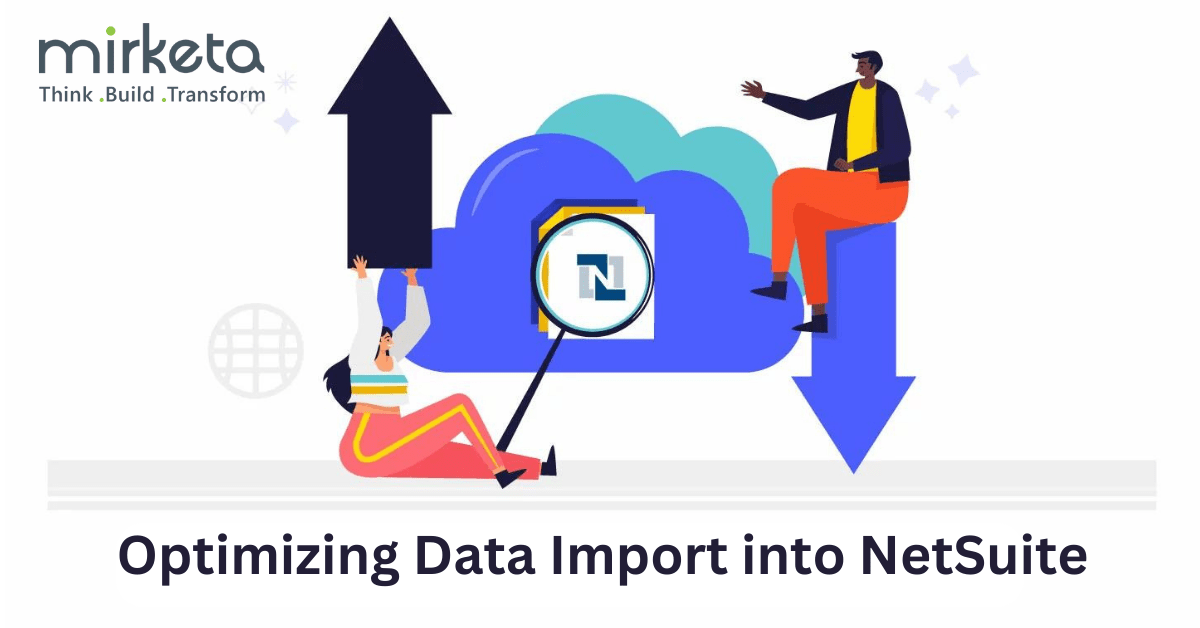In the ever-changing landscape of corporate technology, effective data management is critical for organizations that want to remain competitive and make informed decisions. NetSuite, a cloud-based ERP solution, is extensively used due to its strong capabilities in handling finances, customer interactions, and numerous business processes. However, importing data into NetSuite may be a difficult operation that demands meticulous planning and optimization to assure accuracy and efficiency. In this blog post, we’ll look at essential tactics and best practices for optimizing data import into NetSuite.

1. Data Preparation: Before beginning the import procedure, significant data preparation is required. This includes cleansing and organizing data to guarantee uniformity and accuracy. Key steps include:
a) Data Cleansing: identify and eliminate any inconsistencies, mistakes, or duplications in your dataset.
b) Data Formatting: Align data formats with NetSuite requirements, ensuring that dates, currencies, and other fields meet the necessary criteria.
c) Data Mapping: Define how your data from the source system corresponds to the fields in NetSuite. Create a mapping document to make the import process easier.
2. Choose the Right Import Method: NetSuite supports a variety of data import methods, including CSV (Comma-Separated Values), SuiteTalk (Web Services), and SuiteScript (JavaScript). Depending on the size and complexity of your data, select the approach that best meets your requirements. SuiteTalk or SuiteScript may perform better with huge datasets.
Use NetSuite’s SuiteScript capabilities to do more complicated and customized data imports. SuiteScript automate and script data conversions, validations, and imports, giving you greater control and flexibility. This is especially valuable for organizations with specific data needs.
3. Batching and Chunking: Divide your data into manageable batches or chunks to avoid overwhelming NetSuite and improve the import process. NetSuite works better with smaller data sets, and splitting down imports might assist avoid timeouts or issues during the process. This approach improves error handling and makes it easy to debug any problems that may develop during the import.
4. Error Handling and Logging: Implement a strong error-handling framework to identify and resolve issues that arise during the import process. Keep detailed records for problems, warnings, and successful imports. This proactive strategy enables speedy resolution of data-related issues.
5. Utilize NetSuite Data Import Templates: NetSuite offers import templates for a variety of record types. Using these templates speeds up the import process by ensuring that the data is properly formatted and meets NetSuite’s standards. Custom templates can also be designed for unique company requirements.
While CSV (Comma-Separated Values) is a popular format, NetSuite also supports Excel, TSV (Tab-Separated Values), and other options. Experiment with several file formats to see which works best for your individual data import requirements.
6. Scheduled Imports: To automate periodic data imports, try using scheduled imports. This eliminates manual effort while also ensuring that data in NetSuite is consistently updated.
7. Data Security and Compliance: Prioritise data security and compliance with regulatory standards. Encrypt important information throughout the import process and set up access controls to prevent unauthorized individuals from modifying data.
8. Regular Data Audits: Conduct regular audits to ensure that the data in NetSuite matches the source data. This proactive strategy identifies inconsistencies early on and allows corrective steps to be implemented quickly.
Types of Data Import in NetSuite:
- CSV Imports: CSV (Comma-Separated Values) imports are the most frequent way to enter data into NetSuite. This adaptable format allows users to import a variety of records, including customers, transactions, and items. NetSuite’s CSV import wizard walks users through the procedure and offers mapping options to align CSV columns with NetSuite fields.
- SuiteTalk Web Services: SuiteScript, NetSuite’s JavaScript-based scripting language, offers a flexible method to data import. Developers can write SuiteScripts to automate data import procedures, validate data, and conduct complicated transformations before loading it into NetSuite.
- SuiteScript: SuiteScript, NetSuite’s JavaScript-based scripting language, offers a flexible method to data import. Developers can write SuiteScripts to automate data import procedures, validate data, and conduct complicated transformations before loading it into NetSuite.
- SuiteBuilder: NetSuite’s SuiteBuilder tool provides a straightforward interface for designing and customising different parts of the system, including data import. Users can create custom fields, records, and import maps, resulting in a versatile and customisable solution to specific business requirements.
- Saved Searches and Mass Updates: NetSuite’s sophisticated saved searches allow users to design complicated queries to locate data that need to be updated or imported. Once discovered, cached search results can be used for large-scale updates, allowing for efficient data imports directly from search results.
Leave A Comment